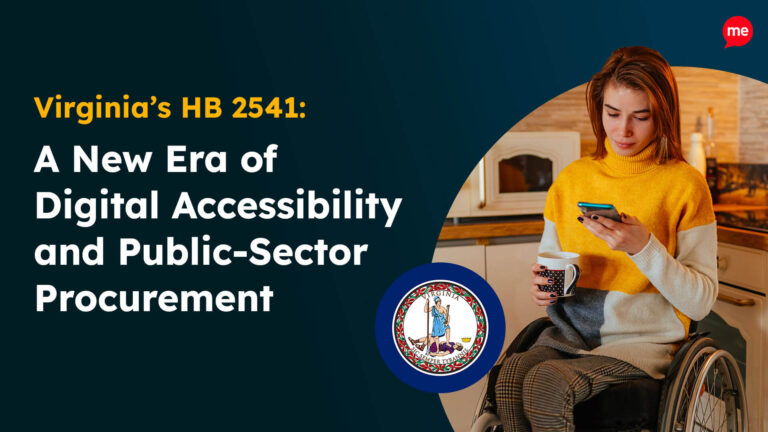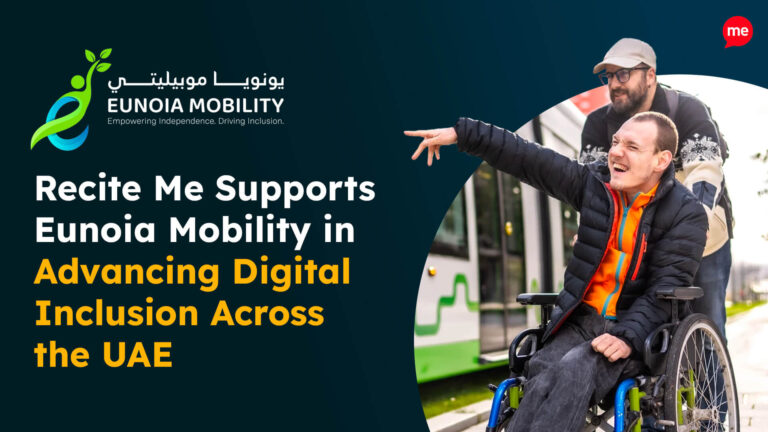In today’s modern world, technology has become a powerful tool for inclusion, breaking down barriers to access for people with disabilities. While high-tech assistive tech solutions, like eye-tracking software, often steal the spotlight, mid-tech assistive technologies (AT) are the unsung heroes. They bridge the gap between businesses and their customers without the complexity or cost of their more advanced counterparts. These tools are simple yet effective, allowing disabled users to live a more independent life and conduct daily activities without the need for assistance. This article pays homage to the power of mid-tech AT, putting forward a compelling case as to why you should include it in your business strategy as soon as possible.
What is Mid Tech Assistive Technology?
Mid-tech AT falls in the middle of the spectrum between low-tech solutions, like pencil grips or page turners, and high-tech devices, such as advanced speech recognition software or screen reader technology. These mid-tech tools are more complex than their low-tech counterparts but don’t require the sophisticated setup or heavy financial investment of high-tech options.
Imagine you are a small business owner with a mild visual impairment. As part of running your online store, you often need to read small text on a range of different screens, but this is something you find rather challenging. If you had access to a simple zoom tool like magnification software (classified as mid-tech) your daily tasks, such as sending supplier emails or updating web content, would be made ten times easier. In a nutshell, this is what mid-tech AT is: practical, user-friendly solutions that address specific challenges.

Free Accessibility Check of your Website
Finding accessibility issues is now easier than ever. Recite Me offers a free automated scan of your website’s homepage to highlight non-compliance. You’ll get recommendations on how to fix them, helping to improve your accessibility score.
Examples or Mid Tech Assistive Technologies
There’s a wide variety of different mid-tech assistive technology tools and devices available on the market right now. Each has it’s own benefits and drawbacks, helping a wide variety of people. Here’s some of the most common types of assistive technology:
Screen masks
Screen masks are another mid-tech solution that can significantly enhance the web user experience for those with cognitive disabilities or sensory processing issues. How do they work exactly? They allow users to focus on a specific part of the screen by dimming or masking other areas with a darker shadow. This reduces distractions and helps users concentrate on the task at hand.
This might be particularly useful for students who battle with ADHD, for example, as these individuals often struggle to maintain focus during online classes. A screen mask would help said student zero in on important content, such as a specific paragraph of text or a section of a webpage, while minimizing distractions from ads, sidebars, or other irrelevant content. For the right person, this simple adjustment can make a world of difference in their ability to absorb and retain information.
Magnification software
Magnification software is a game-changer for individuals with visual impairments. These programs allow users to enlarge text, images, and other screen elements, making it easier to read and navigate digital content. Unlike high-tech solutions, like screen readers, that require extensive setup and learning, magnification software is often built into operating systems or available as a simple add-on.
Whilst magnification software does not necessarily help with accessibility for severe visual impairments, it still serves an enormous proportion of the population who have only mild forms of vision loss; according to the IAPB, this figure totals 295 million people globally. With this in mind, pretty much anyone, from a graphic designer with age-related macular degeneration to a barista with slight long-sightedness, and everyone in between, can benefit from magnification software.
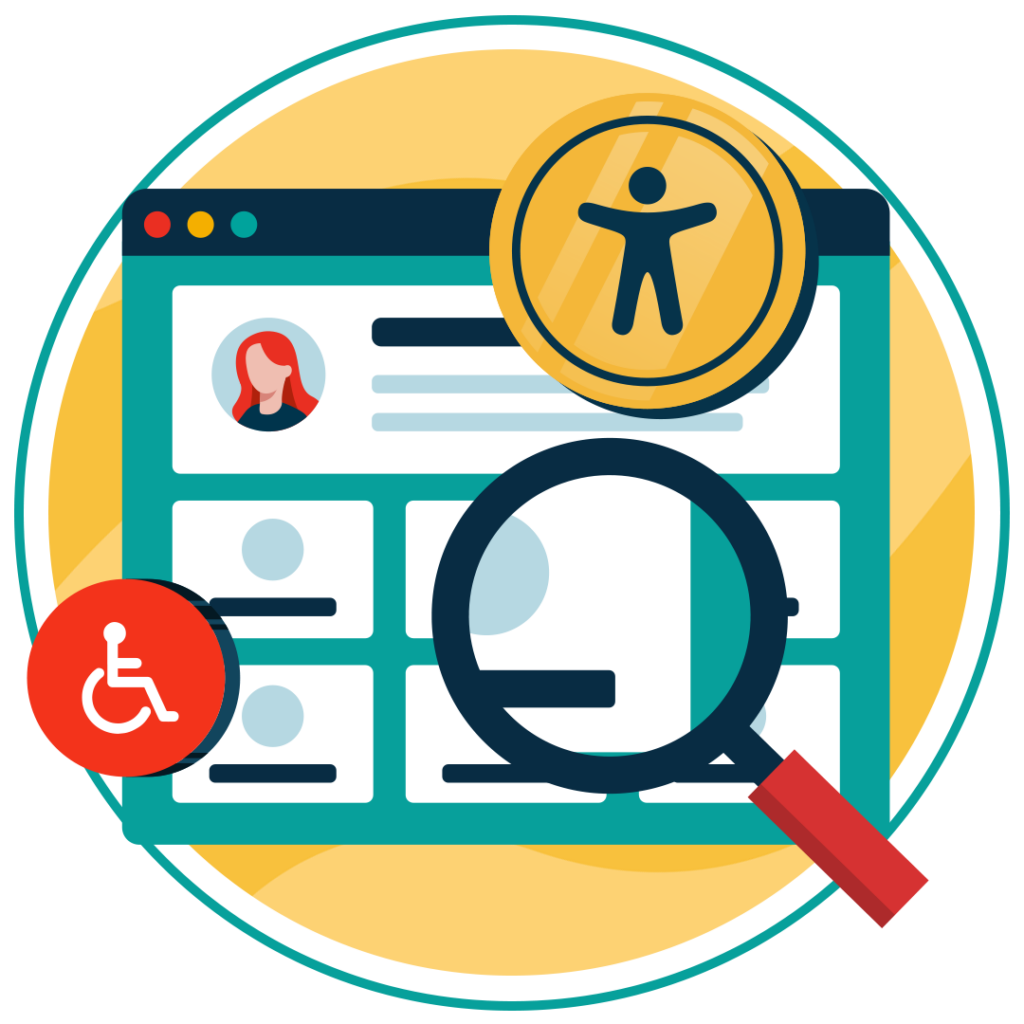
Customizable user interfaces
Customizable user interfaces empower users to tailor their digital environments to their unique needs. This can include adjusting text size, changing color contrast, or even modifying the layout of a webpage, all of which are offered by software like Recite Me’s accessibility toolbar. Investing in such tools can make a huge impact for individuals with visual impairments, color blindness, or other disabilities that affect how they perceive digital content.
Take, for example, a student who has difficulty reading small text due to a mild visual impairment. If given the option to customize their web browser to display larger fonts and higher contrast colors, they can navigate the internet more comfortably and complete their daily work tasks more efficiently, without frustrations or barriers. This shows the need for assistive technology in education and special education.
Wheelchairs and mobility devices
Wheelchairs and other mobility devices are examples of mid-tech assistive technology tools for physical disabilities. These devices provide additional mobility, allowing users to move around more comfortably and freely than their low-tech counterparts. For example, it allows them to navigate tight spaces without assistance, adjust their seating position throughout the day, and manoeuvre between destinations without much physical effort at all.
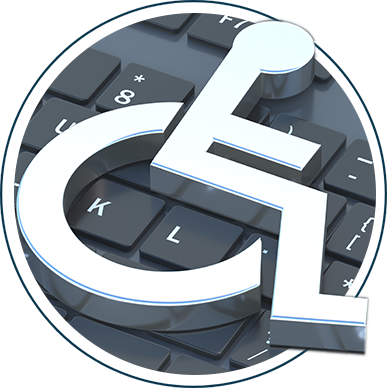
Alternative keyboards
Alternative keyboards can be used as a method of achieving keyboard accessibility. By including tools such as adaptive and on-screen keyboards, offer essential support for individuals with physical disabilities, fine motor control issues, or conditions like arthritis or cerebral palsy. Adaptive keyboards may have larger keys, customizable layouts, or ergonomic designs, while on-screen keyboards provide a virtual interface that can be controlled with a mouse or touchscreen.
For those with arthritis, as an example, typing on a traditional keyboard may cause some pain. However, an adaptive keyboard with larger, softer keys makes the experience significantly more comfortable. What’s more, they can adjust the ergonomics of the keyboard, with features like split layouts, to obtain the specific angles and positioning that cause them the least amount of pain.
Spellchecker, thesaurus and dictionary tools
Spellchecker, thesaurus, and dictionary tools are yet another well-known, but underappreciated, mid-tech AT. While these tools might seem commonplace, they are invaluable for individuals with dyslexia or other learning disabilities. Spellcheckers help catch errors that might go unnoticed, while thesaurus and dictionary tools provide quick access to definitions and synonyms, aiding in the writing and editing process.
These tools are useful for almost any computer-based job, whether you are a blogger, marketing assistant, engineering consultant, or anyone that sends an email for that matter. Their benefits are accessible to anyone that writes in some format, raising the bar for written language in the professional world and levelling the playing field with those for whom writing comes more easily.
These tools are also offered in the Recite Me assistive toolbar. You can get a free toolbar trial to see how it looks on your website in a live preview today.
Our 40-page Digital Accessibility & Inclusion Toolkit helps businesses break down online barriers and make a real impact. It offers practical advice on all aspects of digital accessibility, from writing an accessibility statement to accessible website tips and inclusive hiring.

What are the Benefits of Mid Tech Assistive Technology for Users
Mid-tech AT offers a wide range of benefits that enhance accessibility and independence for disabled users. These tools strike the perfect balance between simplicity and functionality, making them accessible to a broader audience. This section outlines some of the key benefits of implementing assistive technologies:
- Affordability: Mid-tech solutions are generally more budget-friendly than high-tech alternatives, making them accessible to more users and organizations.
- Ease of implementation: With straightforward interfaces and minimal setup requirements, mid-tech tools can be quickly integrated into daily routines or workplace environments.
- User-friendly design: These tools are designed to be intuitive, allowing users to start benefiting from them almost immediately, without needing extensive training or support.
- Enhanced independence: By addressing specific needs, mid-tech AT empowers users to perform daily tasks more independently, reducing their reliance on others.
- Customization options: Mid-tech tools often feature added customization, such as adjustable text size or color contrast, which allows users to tailor the technology to their specific preferences and needs.
- Increased confidence: Using these tools, individuals can interact more effectively with their environments, boosting their confidence and ability to engage with both digital and physical spaces.
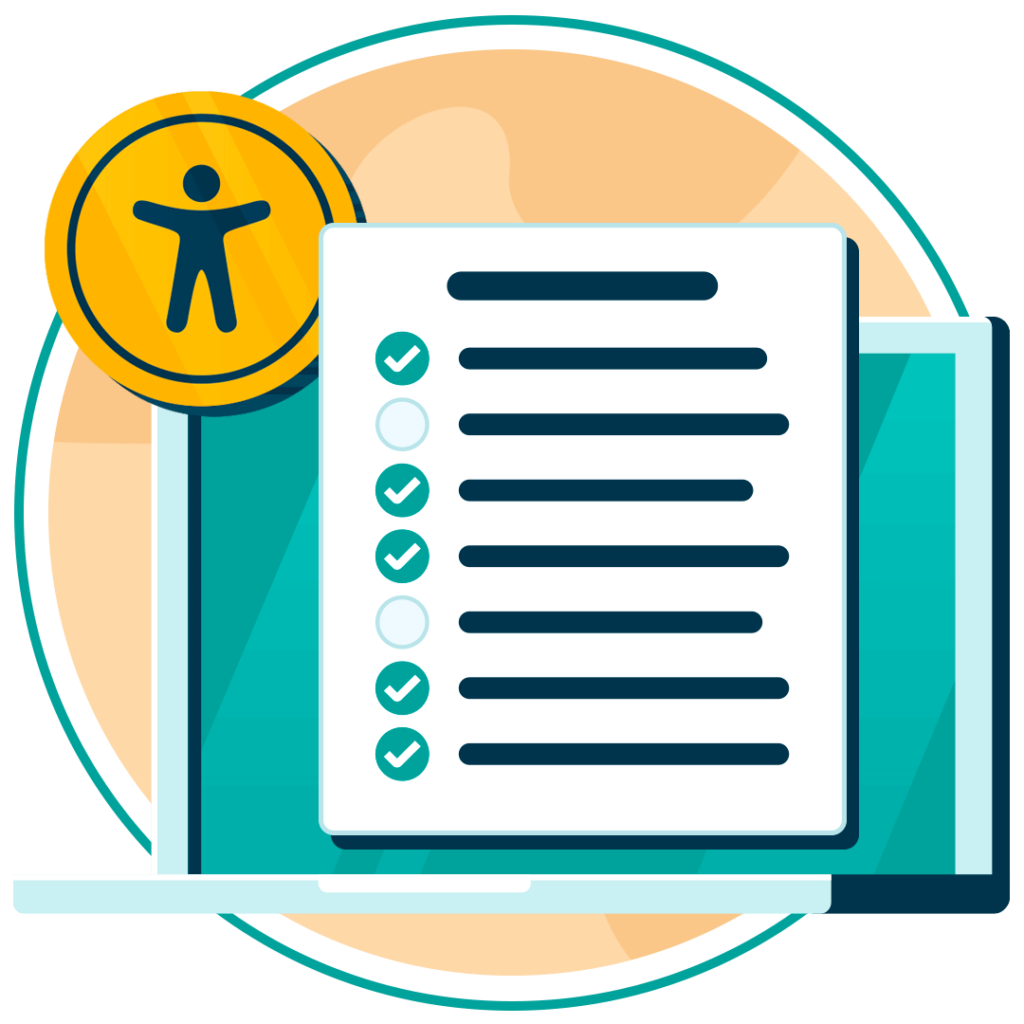
Business Case for Offering Mid Tech Assistive Technology Tools
For businesses, investing in mid-tech AT is not just a matter of complying with accessibility standards; there is also a compelling argument for its role in driving growth and innovation. For example, by offering mid-tech tools, businesses can create more inclusive environments that attract and retain a diverse customer base, especially people with disabilities. Here’s some of the main business cases for accessibility and the use of mid-tech assistive tech:
Revenue and customer satisfaction
Consider the case of an e-commerce website that decides to invest in mid-tech AT. The company integrates customizable user interfaces and screen masks into its platform, making its site more accessible to individuals with visual impairments or cognitive disabilities. As a result, disabled users spend more time browsing the site. When analysing the stats, the owners witness increased customer engagement with their platform, less churn, and thus, higher sales.
Not only that, but with the increased levels of customization, user satisfaction skyrockets; the owners start noticing the 5 star reviews come piling in, from users both disabled and not. This is a classic example of the domino effect that can ensue when investing in simple, but effective, technology like mid-tech AT.
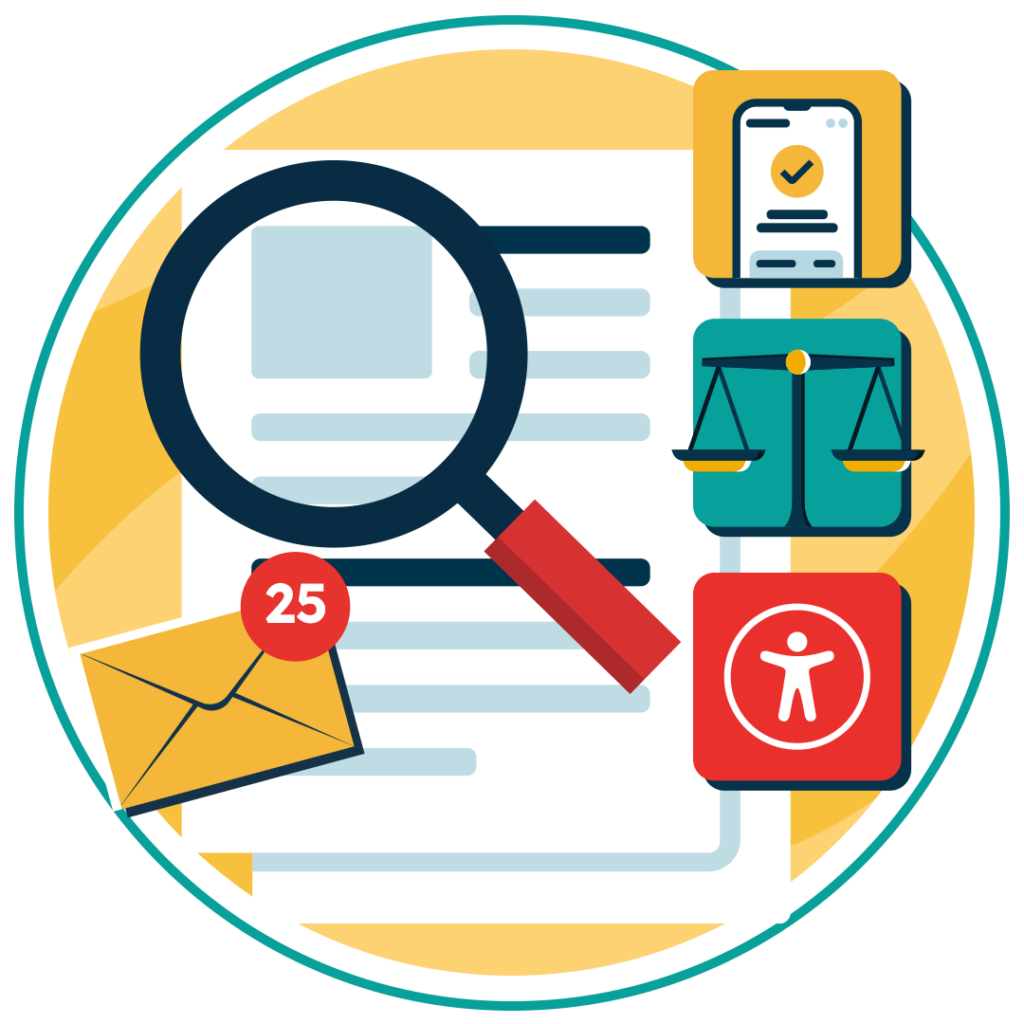
Productivity
One thing not already mentioned, however, is how mid-tech AT improves employee productivity. Employees with disabilities who have access to these tools are better equipped to perform their jobs effectively, leading to higher engagement and lower turnover rates. So, not only do you have happier, more productive employees, but you spend less on training new recruits that are hired to replace their disgruntled predecessors who quit due to frustrations with accessibility.
Branding
More broadly, businesses that prioritize accessibility demonstrate a commitment to diversity and inclusion best practices, which enhances their reputation and brand loyalty, particularly in a world where consumers are increasingly incorporating ethics into their everyday purchasing decisions.
It will also shine a positive light on how attractive your organization is as a place to work at. Boosting your employer brand and making it easier to attract the best talent to your business.
As you can see, mid-tech AT is somewhat of a well-kept secret; the hidden key to creating an inclusive and accessible environment, both in the digital and physical realms. By understanding and implementing these tools, businesses can help their disabled customers become more independent, their employees more productive, and make huge steps towards a more equitable and fairer society.
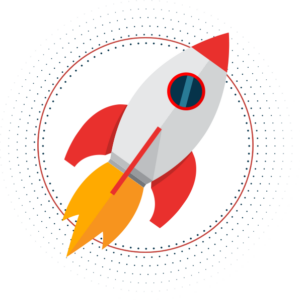
Add Assistive Technologies to your Website with Recite Me
Want to leverage the many benefits of assistive technologies? Then make a start today with the Recite Me assistive toolbar, which integrates with your website and offers a variety of assistive tools. With tools including text-to-speech, magnifier, contrast changer, translation software and much more.
- Contact our team for more advice on assistive technology.
- Find out more about the Recite Me Assistive Toolbar.
- Trial the Recite Me toolbar live on your website.
- Schedule a free demonstration of how our assistive toolbar can help you.
- Run a free scan of your website for WCAG 2.1 AA compliance.

